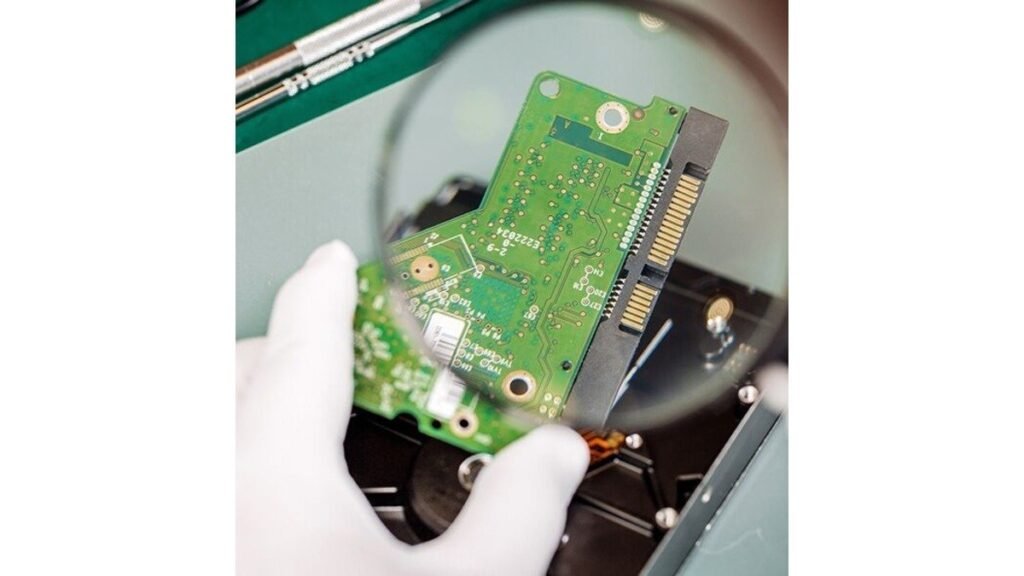A minor issue in just one electronic part could create costly issues and shorten the whole product’s lifespan. That’s where Visual Inspection of Electronic Components comes in. This crucial stage checks the quality and trustworthiness of the parts in electronic tools.
Potential pitfalls like improper alignment, wear and tear, a rough surface, or contamination are all considered. Thus, issues get fixed before they cause equipment failure.
Organizations can save the entire system with the use of visual inspection methods and prevent functional or safety defects. In the electronics industry, visual inspection is about more than mere appearance; it is also necessary for the evaluation of product integrity and performance on an individual component.
Let’s learn why it is essential to have visual inspection in place to protect electronic circuits.
The Basics of Visual Inspection of Electronic Components
Checking each electronic piece for wear and tear or factory defects is as straightforward as performing a conductive visual inspection. This can be achieved using just our eyes, human-guided methods, or picture-based tech.
The Electronic Component Visual Inspection aligns the component with the expected result. It’s designed to spot tiny hidden flaws, dust bits, and soldering issues that can hinder performance but can’t be seen with the bare eye.
In recent years, automated visual inspection systems have been widely used for its efficiency. But that doesn’t mean these processes are to prevent manual checks on the machinery.
Some of the more intricate custom parts may be arguable and require some more intricate solutions than an automated system can provide. This combination will give manufacturers a good and strong feeling of quality, which will satisfy this industry’s quality specifications.
Key Benefits of Visual Inspection for Electronic Parts
Visual inspection is crucial in keeping electronic parts’ quality standards high. It helps both manufacturers and users by providing:
- Better Reliability and Longer Life
When every electronic part is thoroughly checked, products tend to work better and last longer. By spotting flaws before parts go into devices, makers can boost the longevity of their products.
- Lower Costs
Finding flaws during manufacturing is much cheaper than dealing with them after assembly. It’s easier to swap out a bad part during production than after the device is all put together or, even worse after customers have it. Manufacturers can save a lot of money on warranty repairs and maintain their brand’s positive reputation by using effective methods to visually inspect electronic components.
- Safety Guarantee
Some flaws, like lousy soldering or damaged cases, can be risky in things people use every day, like laptops, phones, and even medical gear. By checking with their eyes, workers can spot and fix these issues, making sure the product is safe for end-users.
- Following Industry Rules
Many electronic parts need to meet strict industry rules before they’re considered safe and working properly. Checking by eye helps makers follow these rules and avoid legal trouble that could come from selling products that aren’t up to standard.
Steps in the Visual Inspection of Electronic Components
The visual inspection process typically includes several essential steps, each of which is crucial to ensuring high-quality components. The steps include:
- Initial Assessment
Technicians or machines do this to assess visible surface defects, including scratches, dents, or variations in dimensions. The initial assessment enables them to eliminate parts that do not seem to meet the visible requirements.
- Detailed Inspection
This step goes beyond the surface; often, endoscopes or other high-powered instruments are used to find pits, cracks, bad soldering, or contaminants that the naked eye cannot see. The detailed check is crucial in the Visual Inspection of Electronic Components, as even the smallest problems can have immense operational repercussions.
- Adjustment Tests
Parts must fit together within an assembly, and this part of the inspection entails ensuring that sizes and orientations are correct. Slight variations may cause problems in the assembly or functionality of the product, hence the need for accurate measurement.
- Record Keeping and Quality Assurance
Each reported defect is recorded, sometimes with photographs and descriptions, to allow initiating remedial measures. It assists the production team in resolving such issues and ensures constant enhancement of the quality of the products.
- Feedback Loop
Defect rates are passed on to design and production departments, so new corrective actions should be taken to ensure seamless production runs in the future. This feedback loop encourages positive and constructive feedback and guarantees that the information obtained from inspection is integrated into the design and manufacturing processes.
Conclusion
Visual inspection is not an extra step in manufacturing electronics; it’s the heart of the process that ensures products are compliant with quality, reliability, and safety. With manual and automated inspection techniques, manufacturers can identify potential issues quite early, saving on production costs and providing high standards to consumers.
As the industry continues to evolve, the Visual Inspection of Electronic Components role will only become more vital. It will help to uphold the integrity of electronic products in an increasingly tech-dependent world.
Are you a manufacturer or a tech fan? Grasping the value of visual inspection can expand your awareness of how electronics get their quality stamp. Passing each test with high marks means a secure, dependable adventure for all.

